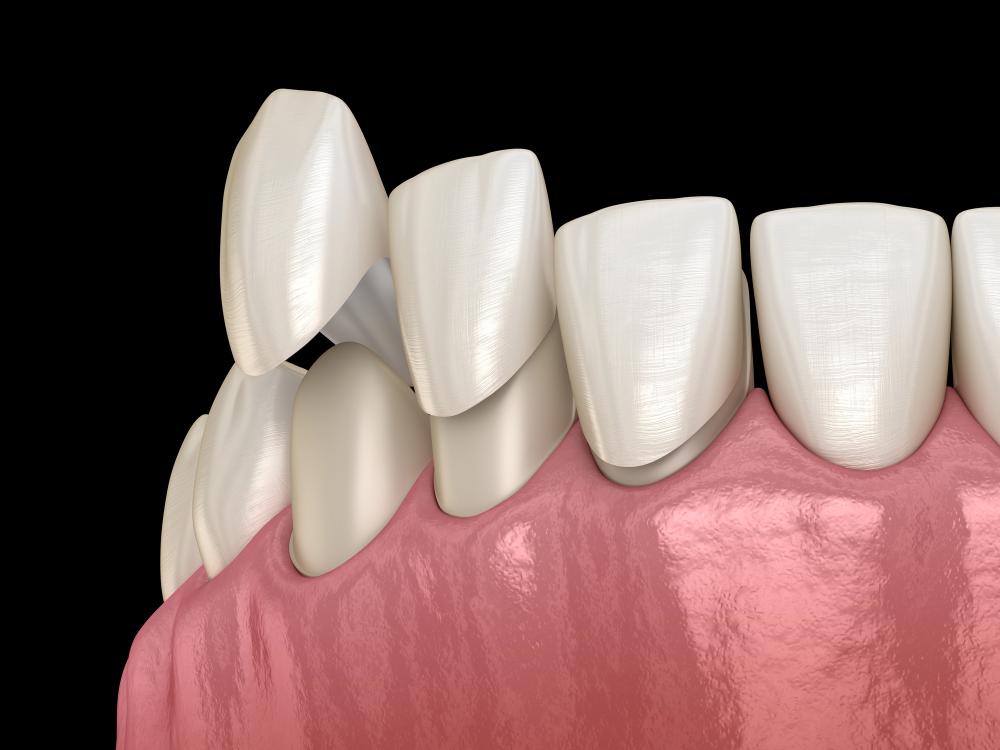Crowns and veneers are both popular dental restorations, but can you put a veneer over a crown to improve its appearance? Crowns restore damaged teeth, while veneers are designed to enhance aesthetics. If you want to know if you can put it over a crown for a better cosmetic result, let us help you understand the process.
What Is a Dental Crown?
This is a cap that fully covers a damaged tooth. It is used when a tooth is weakened due to decay, fractures, or a root canal. Crowns are made from materials like porcelain, metal, or porcelain fused to metal. While they restore the tooth’s function, they may not always match the natural color of your teeth.
What Are Veneers?
Porcelain veneers are ultra-thin coverings designed to fit over the front of your teeth, enhancing their look. They are a great solution for masking imperfections like stains, gaps, or chips, giving you a brighter, more polished smile. Veneers are commonly used as part of a smile makeover to enhance the overall look of a person’s smile. They offer a natural appearance due to the light-reflecting properties of porcelain.
Can You Put a Veneer Over a Crown?
Yes, you can place a veneer over a crown, but there are a few things to consider. Crowns made from porcelain are more suitable for veneers than metal crowns. If your crown is still in good shape but looks unattractive, adding a veneer can improve its aesthetics. It can cover discoloration or imperfections in the crown, making it look more natural.
However, metal crowns may not offer a solid base for a veneer, as the bond may not be strong enough to keep the veneer in place.
Benefits of Adding a Veneer Over a Crown
Enhanced Appearance
The primary reason to place a veneer over a crown is to improve its look. Veneers are made of porcelain, which mimics the translucency of natural teeth, offering a more seamless match with the surrounding teeth.
Preservation of the Existing Crown
If your crown is in good condition, adding a veneer may be an easier solution. This option saves time and money.
Minimal Tooth Adjustment
In many cases, placing a veneer over a crown requires minimal alteration to the existing tooth structure. This can make the procedure quicker and less invasive.
Challenges to Consider
Bonding Issues
The bond between the veneer and the crown may not be as strong as with natural teeth. Over time, the veneer could become loose or fail, especially if the crown material is not ideal.
Increased Tooth Thickness
Adding a veneer will slightly increase the thickness of the tooth. This may affect your bite, so it is important to discuss this with your dentist.
Not All Crowns Are Suitable
Crowns made from metal or older materials may not work well with veneers. In such cases, replacing the crown might be a better option to achieve optimal results.
When to Replace the Crown Instead
If your crown is damaged, discolored, or made of metal, it may be better to replace it rather than applying a veneer. A new porcelain crown can offer both functional and aesthetic benefits, especially when paired with a veneer for the best appearance.
Consulting with Your Dentist
Before deciding, consult with your dentist. A professional will assess the condition of your crown and teeth to determine the best option. Dr. Alex Rubinov, an expert in restorative and cosmetic dentistry, can help you choose between veneers, crowns, and other options like Invisalign clear aligners.
In many cases, it is possible to place a veneer over a crown, but the type and condition of the crown will influence the result. By consulting with a dental professional, you can get the best aesthetic outcome. If you choose a veneer or a full crown replacement, working with an experienced dentist will help achieve a smile you are proud to show off.


